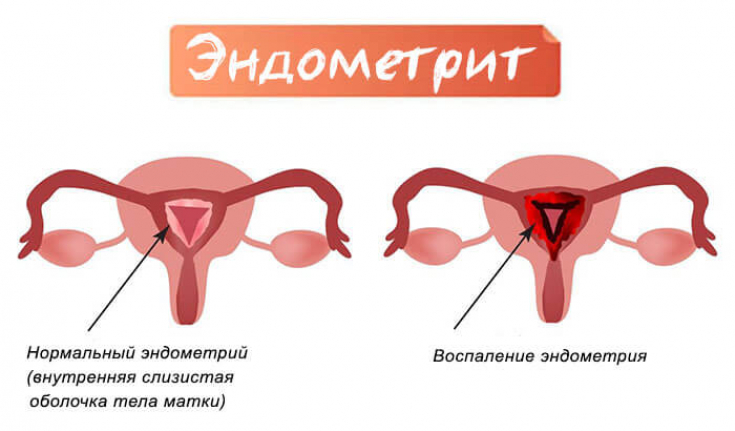Metroendometritis – gynecological disease, accompanied by involvement in the pathological process of the epithelial glandular and muscular membrane of the uterine wall. The initial stage of the lesion is always endometriosis, which quickly spreads to nearby tissues (in particular, the myometrium). Metroendometritis is classified as a multifactorial disease. Its main cause is bacterial, fungal and viral microflora, but a number of factors contribute to its spread (weakening of immune defense, disturbances in the structure of the mucous epithelium, etc.). Read about diagnostic methods and approaches to the treatment of metroendometritis on estet-portal.com in this article.
- The main causative agents of metroendometritis
- Metroendometritis: main diagnostic methods
- Symptomatic picture and treatment of metroendometritisa
The main causative agents of metroendometritis
The pathogenesis of metroendometritis is based on inflammation provoked by pathogenic and opportunistic bacteria. The main causative agents of the disease are the following representatives of the pathogenic flora:
- Various strains of Streptococcus
- E.coli
- Gram-negative strains of Enterobacter
- Opportunistic pathogenic anaerobes from the Klebsiella group
- Gram-negative anaerobes of Proteus strains
- VD pathogens
- Staphylococcus aureus and other members of this bacterial family
- Pseudomonas aeruginosa
- Single-celled Mycoplasma Mollicutes
- Corynebacterium diphtheria
- Koch's Wand
- Fungal infection
- Viruses
With normally functioning cellular immunity, rheological properties of secreted mucus, integrity of epithelial membranes, the probability of penetration of bacteria into the uterine cavity is minimal. As a rule, metroendometritis develops against the background of such conditions:
- Postpartum
- Invasive diagnostic and therapeutic manipulations, laparoscopic intervention
- Instrumental abortion
- Intrauterine device insertion
- Menstrual bleeding associated with urogenital infections
- Complicated labor associated with manual removal of the placenta, lochia remnants
- Associated cervicitis, colpitis
- Uterine injuries
Metroendometritis may be the result of blood or lymphogenous introduction of bacteria into the uterus from other foci of the infectious process.
In general immunodeficiency, any chronic bacterial inflammatory process can be the cause of metroendometritis.
Tube question: diagnosis and treatment of salpingitisа
Metroendometritis: main diagnostic methods
When examining a woman with suspected metroendometritis, attention is paid to change in the boundaries of the location of the uterus and pain on palpation. If the cause of the disease was a spontaneous miscarriage or an improperly performed abortion, a slight opening of the cervix of the uterus is noted.

In a laboratory general blood test for metroendometritis, changes in the concentration of leukocytes, ESR and C-reactive protein, characteristic of inflammation, are indicated.
To diagnose the infectious cause of metroendometritis, PCR, immunofluorescence analysis, and cultural studies are prescribed.
Read the most interesting articles in Telegram!
Symptomatic picture and treatment of metroendometritis
Depending on the course, two forms of metroendometritis are distinguished: acute and chronic.
For acute type of disease a short latent period (up to 4 days) is typical. Acute metroendometritis manifests itself with a rapid rise in temperature to febrile values, severe pain in the lower abdomen, aggravated by light pressure, radiating to the sacrum and lower back. There is a grayish-white discharge (sometimes streaks of blood appear) with an unpleasant specific odor.

Chronic metroendometritis occurs with a blurred clinical picture. Fever is not typical. The patient complains of aching pain in the suprapubic region, periodically appearing thick discharge mixed with pus. Chronic metroendometritis is characterized by disorders of the ovulatory and menstrual cycles.
Treatment of chronic and acute metroendometritis necessarily includes antibiotic therapy and physiotherapy. Compliance with bed rest, cold compresses is shown. With appropriate therapy, the prognosis for recovery is favorable.
If left untreated or improperly performed, there is a high risk of adhesions, infertility, problems with conception and gestation.
Acute and chronic metroendometritis requires attention from the attending physician, since the list of complications – list of pathologies with severe consequences. The patient is obliged to strictly follow the medical recommendations and not to miss control examinations.
Chronic endometritis: is it a factor in IVF refusal?









Add a comment